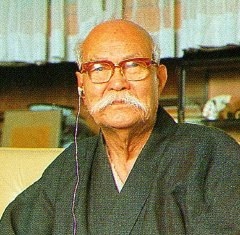Seibo Kitamura

Biographical information
| Roles | Competed in Olympic Games |
|---|---|
| Sex | Male |
| Full name | Seibo•Kitamura |
| Used name | Seibo•Kitamura |
| Original name | 北村•西望 |
| Born | 16 December 1884 in Minamishimabara, Nagasaki (JPN) |
| Died | 4 March 1987 (aged 102 years 2 months 19 days) in Musashino, Tokyo (JPN) |
| NOC |  Japan Japan |
Biography
Seibo Kitamura lived to the age of 102, when he died in his Tokyo home from heart failure. He was one of the most famous Japanese sculptors, also creating the Peace Statue in the Peace Park at Nagasaki, one of two sites where the US dropped atomic bombs at the end of the World War II. Kitamura studied sculpture at the Kyoto City University of Arts from 1903-07 and subsequently at the School of Fine arts in Tokyo from 1907-12, graduating from both with highest honors. During this time he won the first of several awards at the official Bunten Exhibitions and from 1919 acted as a member of the jury at the Emperor’s Exhibitions.
In 1921, Kitamura became a full professor at the Tokyo School of Fine Arts. Four years later he was appointed member of the Academy of Arts. He initiated a number of institutions fostering research in the art of sculpturing. While he created several heroic equestrian statues before World War II, his later topics were freedom, peace and religion. In 1969, he became chairman and later honorary chairman of the Nitten Exhibitions, as well as honorary chairman of the Japanese Sculptors’ Association. To commemorate the 1964 Olympics he created a runner’s statue, which is still standing at the site of the former sports facilities.
Results
| Games | Discipline (Sport) / Event | NOC / Team | Pos | Medal | As | |
|---|---|---|---|---|---|---|
| 1932 Summer Olympics | Art Competitions |  JPN JPN |
Seibo Kitamura | |||
| Sculpturing, Statues, Open (Olympic) |
List mentions
- Listed in Olympians Who Reached the Age of 100 ()